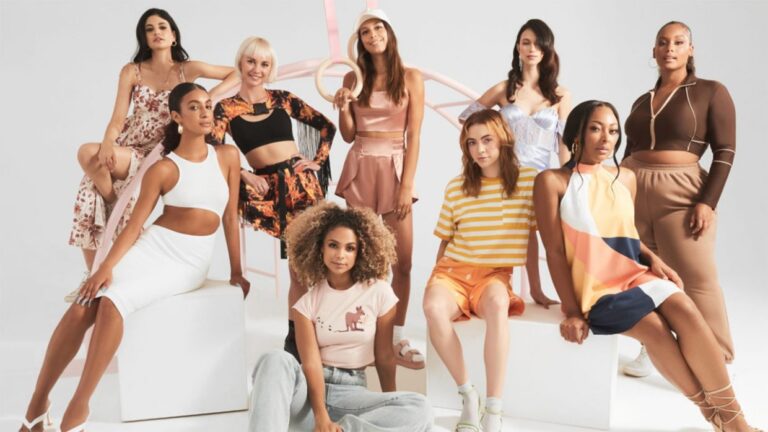5 Simple Tips for Choosing the Best Men’s Activewear
Men’s activewear no longer has to consist of oversized basketball shorts and huge, ill-fitting tees; it’s now possible to blend function, fashion and comfort seamlessly when selecting workout clothes. Because you’re working out in this clothing, it’s important to prioritize the fit and function of your activewear.
1. Focus on the Fit
The clothing shouldn’t be too tight or too loose. If you wear a shirt that’s too loose, it may snag on the equipment or get in your way while you’re moving. On the other hand, tight clothing can restrict your movement and distract you from maintaining proper form. A slim-fit tee is a good option because it’s both functional and flattering. Some slim-fit tees are designed to accentuate your biceps and shoulders while maintaining a comfortable fit. Buttons at the top add a sophisticated touch.
2. Consider the Fabric
Lightweight, breathable fabrics keep you cool during your workout. Examples of materials to look for are polyester, nylon, poly blends and spandex. If you live in a cold climate, then you may want to consider wool for your winter fitness apparel.
Moisture-wicking features keep your clothing drier as you exercise. They also reduce odors from sweating. Some fitness apparel has antimicrobial properties for extra protection.
Polyester and nylon socks absorb moisture and keep your feet more comfortable during intense workouts. This is an important factor for outdoor activities. Sweating too much in hot weather can cause blisters on your feet. In cold weather, it makes your feet feel cold. While it may seem counterintuitive, wool socks are great for workouts in hot weather as well as in cold weather because they prevent blisters, wick away moisture and come in a variety of textures and thicknesses.
3. Make Sure It’s Functional
The weather and the type of workout you’re doing influence what type of activewear you should use. If you’re outside in the winter, then wear an insulated jacket and layers. You might find that you can shed some of the layers as your body warms up from the exercise. Wear sweat-wicking material as the inner layer and an insulating fabric as the outer layer.
Sweatshirts and hooded caps are other ideas for staying warm during a winter workout outdoors. Underneath your shorts, you can wear leggings. Most men’s athleisure shorts have a relaxed fit, an elastic waistband and an adjustable drawstring. They are secure throughout your workout even if you’re going at it hard. Their soft, moisture-wicking material keeps you comfortable, too.
4. Match Your Clothing With Your Activity
Standard athletic shirts and shorts work well for the gym. If you plan on doing yoga, cycling or another type of activity, then what you need to wear will vary. The type of shoes that you wear matters, too.
Cycling
If you’re cycling where cars are, ensure that your clothing has reflective elements to improve your visibility to drivers. Don’t forget about the outer layers. Any jacket that you wear on a bicycle has to have reflective elements. Your shorts should also make you visible to drivers. The goal is to make yourself noticeable in any direction a car could approach you.
Always put on a bike helmet before mounting your bicycle. When your helmet sustains a ding, it’s time to replace it. Absorbing a strong impact uses up the protective cushioning.
Some bike shorts have a padded crotch area, known by the fancy name “chamois,” to protect you from friction and reduce moisture. You can wear liner shorts, a type of underwear with chamois, under athletic shorts to give yourself extra protection too.
If you’re mountain biking, then choose mountain biking shorts that have gel padding in the crotch. They are better for cycling through tougher terrain than regular bike shorts.
Yoga
You’ll want to wear form-fitting clothing for yoga, but they shouldn’t be so tight that they restrict your movement either. Loose clothes might seem like they would be comfortable, yet they can get in the way when you’re attempting and transitioning between poses. You can find specially crafted men’s yoga apparel, including pants, shorts and men’s athletic shirts. There are men’s yoga jackets and hoodies, too, the room is cold or you want to try an outdoor morning session, such as on the beach or in the woods.
Be aware that some types of yoga are designed to increase your heart rate and can make you sweat. For this type of yoga, opt for moisture-wicking, breathable clothing.
5. Wear the Right Shoes
Certain fitness activities require special shoes to prevent injuries. You need running shoes for running because your feet flex in a different way than when you are walking. They also endure greater impact. You can hurt your feet, ankles and legs by not sticking to walking shoes for walking and running shoes for running.
Equally important is knowing what type of arches you have: normal/neutral, high or low. You need to wear the right shoes for your foot type. Check your arches by dipping your foot in water and stepping onto a piece of cardboard. Neutral arches create a half-filled middle section when you take the footprint test. If the majority of your arch shows on the cardboard, then you have low arches. If only a small sliver of your arch prints on the cardboard, then your arches are high.
Elevate Your Workout With the Right Activewear
Choosing comfortable fitness apparel that’s designed for the type of exercise that you’re doing allows you to maximize your focus. When your clothes become soaked in sweat or shift around too much, it distracts from your workout. Wearing the right activewear is a matter of safety, too. Familiarize yourself with your chosen fitness activity to know what clothing is suitable, and remember to wear the right shoes.






